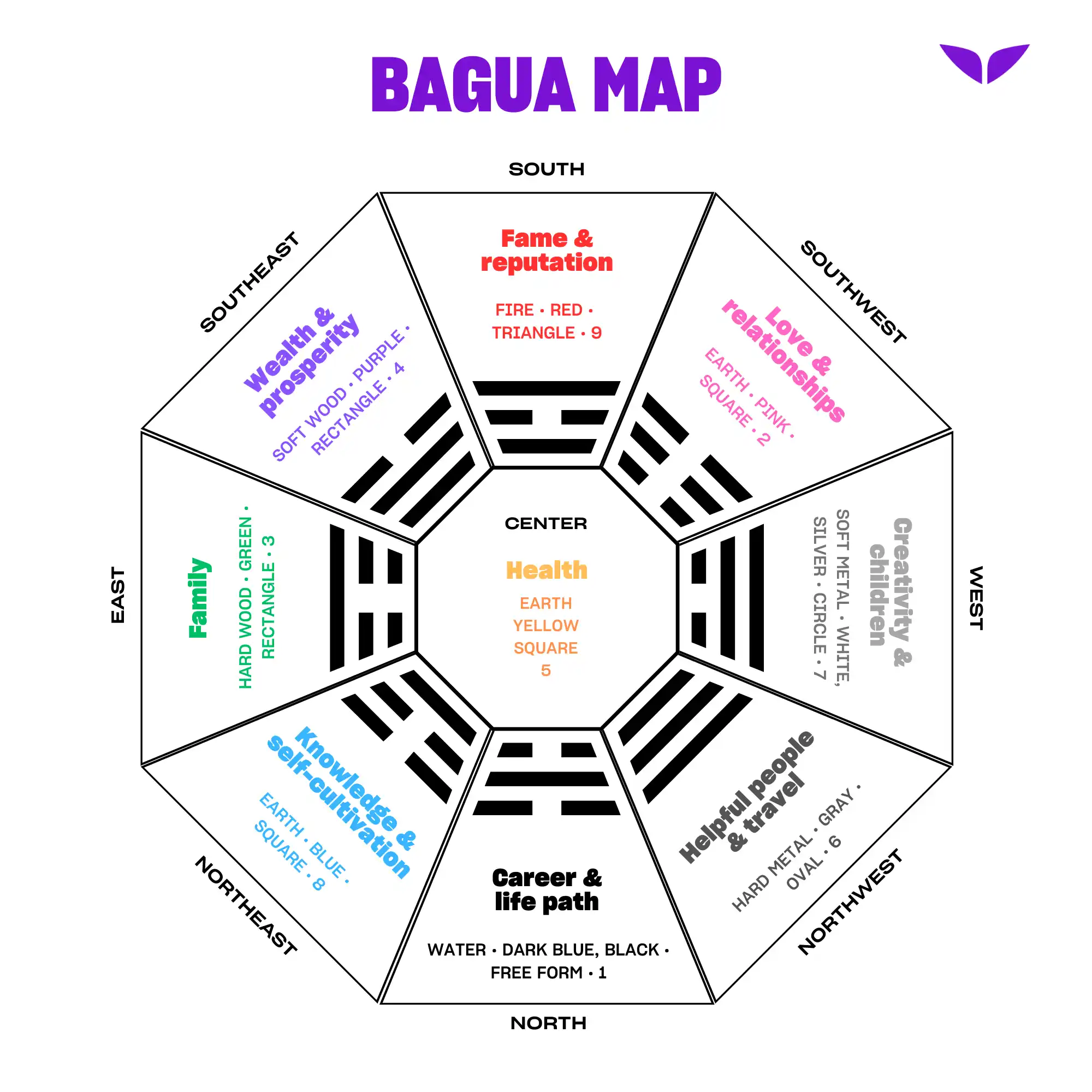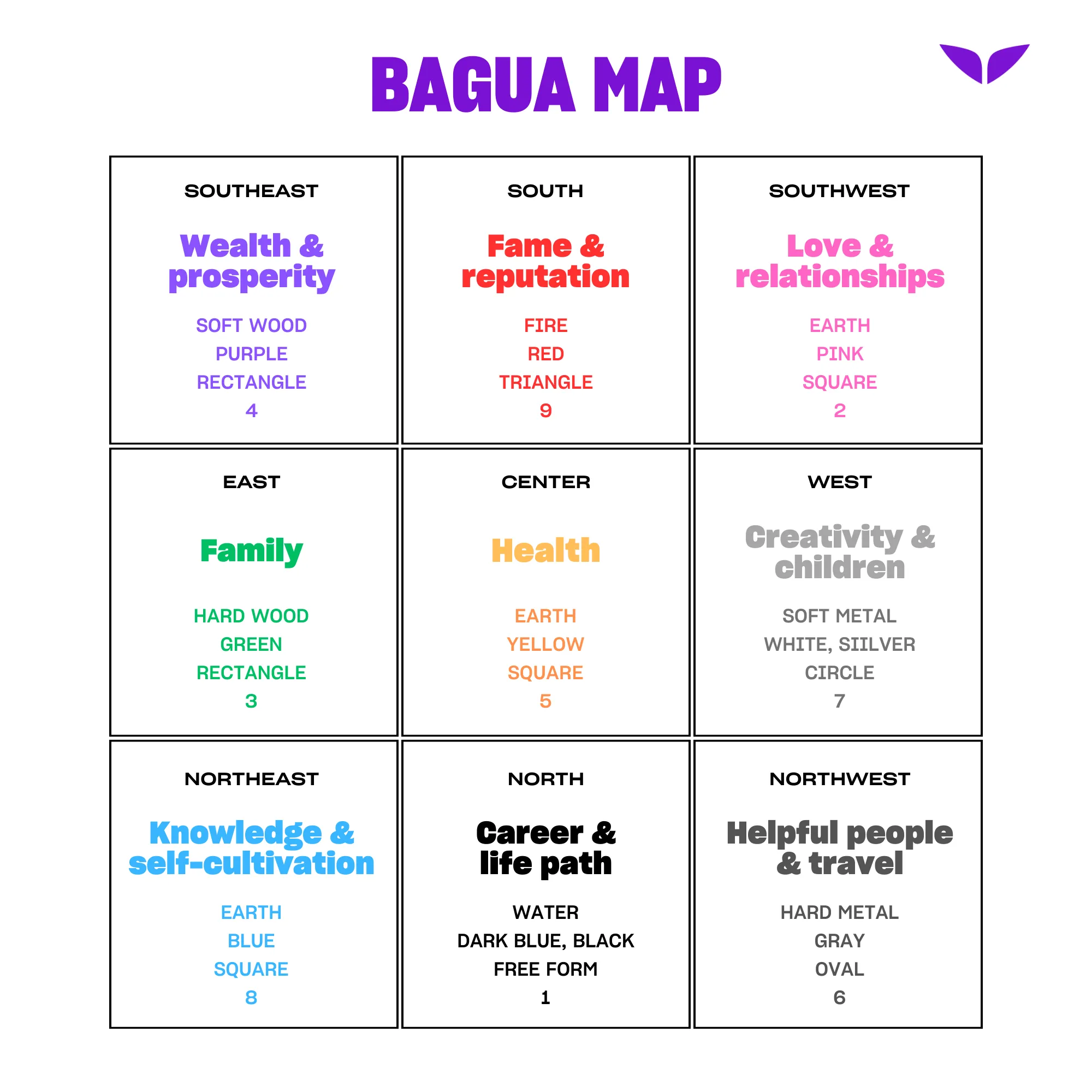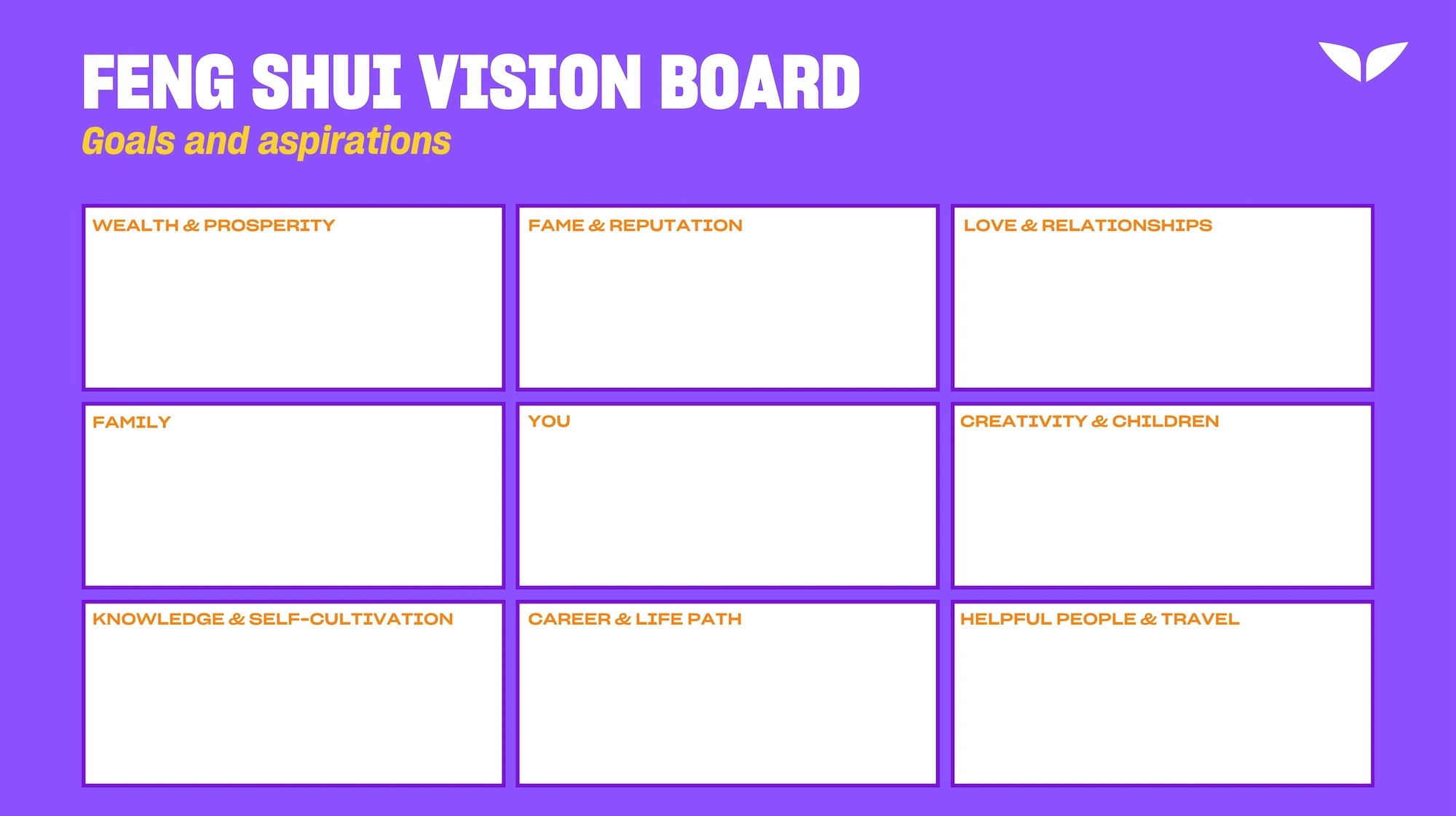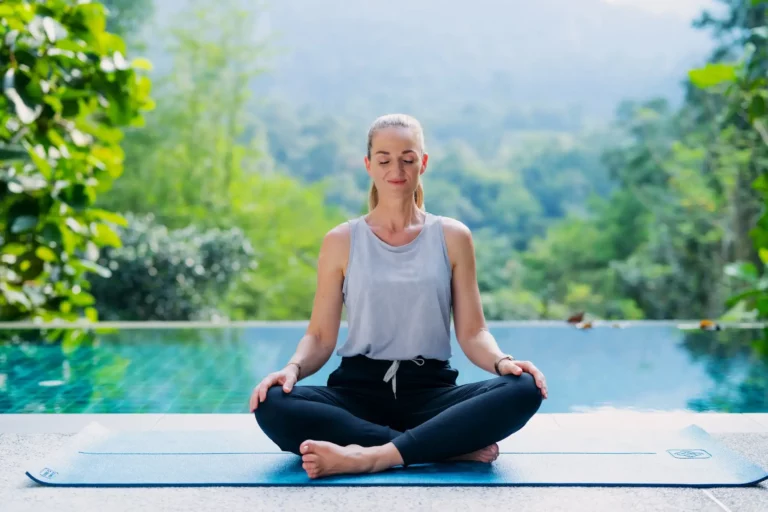“I’m a big believer in vision boards,” says Marie Diamond, a feng shui master and the trainer of Mindvalley’s Feng Shui for Life Quest. As a matter of fact, one of the things she put on hers in the early 2000s was that she was going to move to the United States—and so she did…in 2002.
The thing is, Marie didn’t just plaster a bunch of pictures on a piece of cardboard. No, no. She created something more powerful—a feng shui vision board.
There’s no denying that there’s something beautiful about seeing all the things you hope and wish for in one place (instead of them having real estate in your mind). And when you know how to use it following the practices of feng shui, it can truly be an incredible source of abundance.
What is a feng shui vision board?
A feng shui vision board isn’t that much different from traditional vision boards. It’s just that the former incorporates the principles of the ancient Chinese practice to allow a better flow of energy, a.k.a., qi, and speed up the process of manifestation.
There are a few things to consider as well when creating a vision board using feng shui:
- What your goals are,
- Where you place it in your space,
- What types of symbols and images you choose,
- The arrangement of them, and
- The items you choose to stay emotionally connected to your goals.
Vision boards have proven to be an effective tool for many. For example, one survey found that one in five entrepreneurs use it when they start their business—76% report that their business is where they envisioned it to be when they started.
Now, feng shui works with energy flow, as Marie explains in her Mindvalley Quest, and how it moves with the space around you. And when you use it to create your vision board and create a space for your vision board, it’s bolstering the Law of Attraction so that your wishes and hopes turn into reality.
How is a feng shui vision board different from a regular vision board?
While both vision boards are super similar, some key differences should be highlighted. Here’s a side-by-side comparison:
| Feng shui vision board | Traditional vision board |
| Based on feng shui principles | No specific guiding principles |
| Specific placement of images and items to promote better qi | Random placement of images and items or based on personal preference |
| Includes all areas of life, such as health, wealth, love, career, etc. | Typically based on goals or material achievements |
| Uses the bagua map as well as feng shui colors, symbols, etc. | Uses images from magazines, print outs, personal photos, and quotes |
What’s interesting is, a feng shui vision board doesn’t necessarily have to be a board or paper or wall with strategically placed images, items, and even affirmations on it. It can also be your space.
“The space around you is like a three-dimensional vision board,” Marie explains. “Everything that is around you affects your subconscious mind.”
For example, you can rearrange your bedroom layout for romance, health, and wealth. It’s up to you, really, on whichever medium you choose—board, paper, wall, space—to manifest your desires. But the most important aspect is, the feng shui part.

How to create a feng shui vision board
So put the two elements—feng shui and vision board—together. Here’s how:
1. Identify your personal energy number
A personal energy number (or kua number, as it’s better known in feng shui circles) is something that’s determined by their birth date. According to Marie, it’s what determines how the qi flows in your life and, therefore, how you manifest abundance.
It takes a little bit of math, but it goes like this:
- Add the last two digits of your birth year. If the resulting number is a double-digit, add the digits again to get a single digit. For 1983, it would be 8+3. Because it equals 11, then you add 1+1, and that makes it 2.
- For females, add 5 to the single-digit number in Step 1. If the resulting number comes up to a double-digit, then add those two digits together until you get a single digit. For those born in 1983, the digit from Step 1 is 2. Add 5 to that, and you get 7. This would be your personal energy number.
- For males, subtract the single-digit number in Step 1 from 10. For those born in 1983, the digit from Step 1 is 2. So subtract that from 10, and you get 8. This would be your personal energy number.
2. Find your personal direction
Based on that energy number, there will be four personal directions that will be the strongest for you to activate in your home and workspace:
- Success
- Health
- Relationships
- Wisdom
Marie explains that is “the basics of personal feng shui—making sure you face one of your four directions.”
Once you know which way success, health, relationships, and wisdom are for you (be it north, east, south, west, or the ones in between), you can then use the bagua map to identify the other directions on your vision board.
Why’s this important? Simply because each one has a purpose, element, color, material, form, and symbol that’s the strongest in that area. You can then place the appropriate images or things in that corner and “open up your space to align yourself with your mindset and your destiny.”
You can download Marie Diamond’s app to find your personal directions for each one.
3. Place image or things in their appropriate areas
Now that you’ve identified your direction for success, wealth, relationships, and wisdom, you can find images or items to put in those specific corners. Below is how to use the bagua map to create a feng shui vision board:

But first thing’s first: Before you start tacking things on your board or shifting your space around, Marie has one important tip: put your most recent picture at the center.
“You’re the center of the Universe, and you want to attract everything coming towards you,” says Marie on her TikTok account. Additionally, she says to put it in a “gold-looking frame.”
Why? “Because then you tell the Universe, ‘I’m ready to attract the best that is on my vision board.’”
Feng shui vision board examples
Because everyone’s personal energy direction is different and everyone’s goals are different, that means everyone’s feng shui vision board will be different as well.
Like Amanda van der Gulik, owner of Clever Dough Kids, who’s been through Marie’s Mindvalley Quest. She has shared how she uses feng shui vision boards to manifest her desires on her YouTube channel.
Now, if you need more examples you can draw inspiration from, here are a few:
1. General life goals
This is where you can split the board into nine sections, following the bagua map.
- Wealth and prosperity: Images of money, gold, luxury items, and affirmations like “Wealth comes to me easily.”
- Fame and reputation: Pictures of awards, recognition, and words like “success” and “prominent.”
- Love and relationships: Photos of happy couples, friends, and words like “love” and “harmony.”
- Family and health: Pictures of family gatherings, quotes like “Family—where life begins and love never ends,” and healthy foods.
- You (in the center): A recent picture of you that you love and phrases like “I am enough.”
- Creativity and children: Artwork, drawings, photos of children laughing, and words like “creativity” and “wow.”
- Knowledge and self-cultivation: Images of your favorite books, symbols of wisdom, and quotes like “You is kind. You is smart. You is important.”
- Career and life path: Images that represent your dream job or office, and affirmations like “I smash my goals with ease.”
- Helpful people and travel: Photos of your wanderlust bucket list, people you’d like to be mentored by, and phrases like “I attract helpful people.”

2. Career-focused
If your goal is to enhance your professional life, then here’s how you can lay out your vision board, feng shui-style.
- Career (bottom center): Images of your dream job or office.
- Wealth (top left): Pictures of financial success and paychecks.
- Knowledge (bottom left): Books, certificates, and affirmations like “I am continuously improving myself.”
- Fame (top center): Awards and public speaking engagements.
- Helpful people (bottom right): People who inspire you, mentors, and networking events.
3. Love and relationships
For stronger, more loving relationships, you can do the following for your vision board:
- Love and relationships (top right): Photos of happy times with your partner or of happy couples, romantic settings, and rose quartz (since rose is the color associated with relationships).
- Family (left center): Photos of fun times you’ve had with your family or that which represents so.
- Fame (top center): Images representing mutual respect and admiration. This can include trophies or public recognition.
- Helpful people (bottom right): Pictures of friends, support groups, or a community you’d like to be a part of.
Where to place a feng shui vision board
According to Marie, this depends on your main goals. For example, if they have to do with career success, consider placing the board in your home office. Or if you want to have stronger relationships, place the board in your bedroom.
Marie herself placed her vision board in her personal success direction. She had a small yellow Post-It note on it that said, “I’m going to be in a movie seen by millions of people that will transform the world.” On top of that, she also bought herself a fake Oscar statue and put “Marie Diamond” on it with the year “2005.”
“Within a few weeks,” she recalled, “I started attracting the first people that ultimately led me to be in the movie called ‘The Secret’.” And within a month, she had her first Oscar-winning client.
BONUS: Feng shui vision board template
Need a little help laying the foundation of your vision board? Here’s a template you can use.

Unlock your brilliance within
If there’s one piece of Marie Diamond’s wisdom that you should take away, it’s this: “Everything that’s around is affecting your mindset.” From the colors, furniture, decorations, and cleanliness (or messiness).
Just like it did the life of Kathy Brown, a dental hygenist and Mindvalley Member from the United States, who testified:

“I had ended a 2-year relationship with a man because I felt like it was not going in the right direction. (…) After the [Feng Shui for Life] course my boyfriend proposed to me and two days later my daughter’s boyfriend proposed to her.”
You, too, can experience the power of feng shui like Kathy and the over 100,000 students who’ve taken Marie’s Mindvalley Quest. In her eight-week program, Feng Shui for Life, you’ll learn…
- How to optimize the positive energy in the space around you,
- Turn your home or office into a 3D “vision board” for your goals,
- Dissolve energy blocks quickly, and
- How to arrange your living and work spaces to amplify your abundance in all aspects of your life.
You can get a sneak peek when you sign up for a Mindvalley account. It’ll unlock the first few lessons that you can watch for free.
Welcome in.







